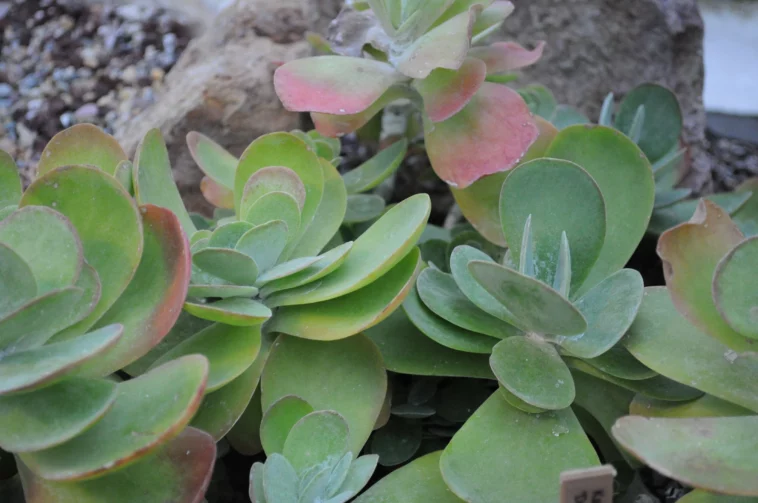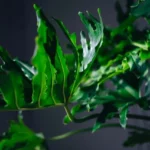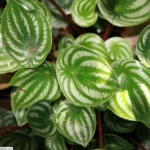Table of Contents
How to Care for a Paddle Plant
The paddle plant, a type of kalanchoe plant, is a succulent native to South Africa, Swaziland, Lesotho, and Botswana. It is a flowering plant known for the colorful wine-red edges on its thick, fleshy, paddle-shaped leaves during the winter.
Depending on the exact type of species, the succulent can grow up to 24 inches (60cm) tall. The leaves may grow to eight inches (20cm) long and between six and eight inches (15-20cm) wide.
While this succulent is attractive during the winter, it becomes even more so during the spring. At this time, a two to three-foot (60-90cm) stem grows from the center, producing yellow tube-shaped flowers.
To properly care for the paddle plant, also called a flapjack, there are some requirements. Fulfilling these needs, such as offering sunlight and water, helps to create a healthy and vibrant plant all year through.
What Does Your Paddle Plant Require?
While this succulent is not difficult to care for, there are some simple things it does need to thrive in its environment. These requirements tend to vary based on the time of year.
Light Requirements
This plant not only enjoys bright light but also appreciates some direct sunlight. If this succulent is contained in a pot, it can be moved outside during the summer to soak up some extra rays.
However, this should be done gradually, and not in the peak hours of the day, to avoid scorching the leaves. If the temperature outside drops below 10 degrees Celsius (50 degrees Fahrenheit) outside, the plant should be moved back inside.
Temperature Requirements
The paddle plant is able to grow at the average home temperature, even when the air is dry. It is healthier when it is exposed to temperatures between 16-29 degrees Celsius (60-85 degrees Fahrenheit).
Anything lower than 16 degrees Celsius can start to cause issues for it. The plant must not be in temperatures below 10 degrees Celsius.
Humidity Requirements
Average household air humidity of around 40% works well for the paddle plant.
Soil Requirements
It is advised to use potting soil designed for cacti or succulents. Home-done mixtures should contain a combination of course sand, peat moss, and compost.
Pots designed with excellent drainage systems are advised for these plants so that the soil does not get soggy.
How to Water
Paddle plants do not enjoy a lot of water. They are similar to the cactus plant in this regard. Water must only be added when the soil is dry.
For the houseplants that are kept outdoors, only completely drained pots should have water added to them. It is better to wait for the soil to dry completely before adding more water as root rot may develop in overwatered foliage.
While not much water is required during the warm months, even less is needed during the colder months. Also, any water added must be at room temperature to avoid shocking the plant.
How to Fertilize
These plants can be fertilized lightly during the growing season. Otherwise, they may be fertilized every few months, using that which is designed for cacti and succulents. It is not recommended to add this food during the autumn months.
Extra Tips for the Paddle Plant
Caring for this succulent doesn’t require much effort because of its low level of maintenance. However, there are always extra tips that can help with keeping the plants healthy and allowing them to thrive.
Pests and Disease
When the plant is cared for properly, there are typically very few issues with pests. However, when overwatering occurs or there is poor drainage within the pots, the additional moisture can attract mealybugs, scale, and similar kinds of insects.
There are natural and chemical insecticides that may be used to eliminate infestations once they are discovered.
In most cases, when pests are present, there will be discoloration of the stem or leaves, and in the case of mealy bugs, a white cotton-like substance on the plant or soil.
Root Rot
The most common disease is root rot, caused by overwatering or poor drainage. This causes discoloration of the stems and leaves.
The first step is to repot the houseplant into fresh soil, ensuring there is adequate drainage. Fungicides might be required to treat the rot.
Powdery Mildew
Powdery mildew is another malady, but again, this often develops from too much water or fertilizer.
Remedies for this disease include cutting the infected leaves from the plant and applying diluted milk or diluted dish soap mixed with baking soda.
Chemical treatments are available also. It should be noted that these succulents often produce a white powder. Be sure the powder is in fact mildew before treating it.
Pruning
Pruning should only be completed when the plant is healthy and not stressed. The plant may be pruned to remove the offsets from a mature plant or to remove cutting for propagation.
A sharp clean blade is advised for this process. Because of the possibility of skin irritation from the sap, wearing gloves is recommended.
Plants are considered to be mature when they have become established and they start to show healthy growth.
Propagation
Propagation during the spring and summer through the use of cuttings is the most common method.
- Leaves may be cut near the stock using a clean sharp blade or pruning shears.
- The cuttings need to be put aside for about two days or until a callus forms on the bottom near the cut.
- To plant the snippings, simply plant them in a small pot filled with moist potting mix.
- The soil should be kept moist but not overwatered.
- Bright indirect sunlight works better for the development of the cuttings.
Repotting
Repotting should only be done when it is necessary. For example, if the pot is overcrowded, or in the case of root rot.
New pots need only be slightly larger than the plant itself because these succulents grow better when the roots are snug.
Toxicity
Paddle plants are toxic to humans and animals. They must not be ingested. The sap from the plants may also cause skin irritation.
Caregivers are advised to wear gloves when touching, propagating, and repotting them.
Joe Mabel, CC BY-SA 3.0 https://creativecommons.org/licenses/by-sa/3.0, via Wikimedia Commons


